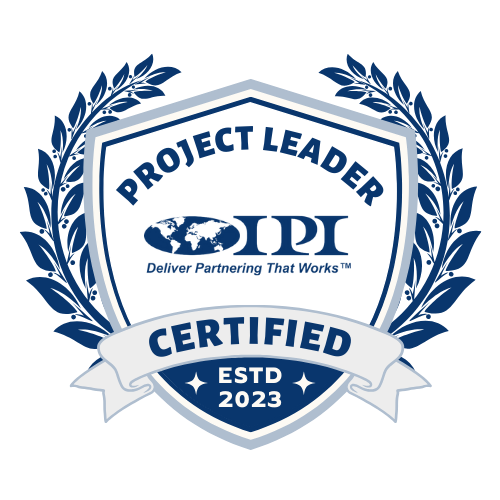
Construction Nation,
The International Partnering Institute’s new Partnering 3.0 Certification for Project Teams teaches project team members how to operate as a high trust high performing team, using the Collaborative Partnering Framework.
I keep being asked when the best time is to have your project team take the IPI Project Leader Certification training, so they know how to implement the Collaborative Partnering Framework on their projects. So, today I am going to answer that question.
First a bit of an overview. Today IPI’s Collaborative Partnering is a proven framework that increases the performance of construction project teams. The Construction, or A/E/C industry, continues to evolve and change too. We’ve added new delivery methods and have new regulations, new requirements, new challenges, and new technologies. Partnering has continued to evolve with all these changes and continues to evolve today.
Partnering 3.0 is the next step in the evolution of construction partnering. Partnering 3.0 combines the Collaborative Partnering Framework with the IPI Project Leader Certification team training to create a true Project Operating System for the team. The IPI Project Leader Certification training for Project Teams teaches project team members how to operate as a high trust high performing team, using the Collaborative Partnering Framework.
How your team members operate has an immediate and lasting impact on your project results. If we can offer the team a framework, guidance, and training on how high performing teams operate, then they will not be left on their own to try and figure it out. We know most project teams don’t figure it out, and that is why we need a new approach.

When is the Optimal Timing to Choose Partnering 3.0?
There are three optimal times for a project team to take the IPI Project Leader Certification Training and implement the IPI Collaborative Partnering Framework:
- The Honeymoon Phase – As the team is forming
- The Disenchanted Phase – When a project team is struggling
- The Restart Phase – When a team needs to start over
1. The Honeymoon Phase
The “honeymoon Phase” for most projects starts when the project team has formed after a bid or pursuit has been won. This is the exact time when everyone is open to learning together, and when the Project Leader Certification training can have the greatest impact for the project. Right from the beginning the team starts using the project operating system based on what they have learned (Collaborative Partnering Framework + IPI Project Leader Certification Training = Project Operating System). They share a common intention, common framework and tools, common language, and a shared purpose. They will grow in their abilities to build trust and collaborate as the project rolls out, no matter what problem pops up.
2. The Disenchanted Phase
Another optimal time for the Project Leader Certification Training to be given is when the project team has become disenchanted with one another. Often, when the team feels stuck they often don’t want to be stuck and are very motivated to get unstuck. This makes them open to learning how to operate with trust and collaboration and to use the frameworks and tools they will learn. Most projects that become disenchanted “go to the mattresses” (as they say in the Godfather) and start protecting their interests. This becomes a self-fulfilling prophecy. The project team becomes more and more adversarial. As the team’s need to protect snowballs, so does their inability to communicate, coordinate, and solve problems. Conflict is the name of this game. This leads to a failed project and to a very frustrated and stressed team. Offering them the Collaborative Partnering Framework and training them in how to use it to create a successful project will likely be a relief, and something they can get behind.

3. The Restart Phase
For some projects, there are so many changes in personnel, leadership, or scope, the project has fundamentally changed. The project team has a history together, but with all the changes they don’t have strong cohesion or trust. They may have several unsolved problems that weigh them down. Paperwork may be falling behind. People are starting to put their positions into writing. This might be just the time to restart so the team can realign, refocus, recommit, and remeasure. The team might be ready for a new way of operating. For a project in the restart phase, the team NEEDS to become more effective and efficient in working together. There is so much risk on the line that they are open to trying to figure out a better way. If it has not already happened for this team, their stress and frustration can easily shift into an “us vs them” mindset and relationships.
Having your project team learn how to use the Collaborative Partnering Framework helps to melt away complexity by having a clear, agreed upon focus, a common language, common tools, and clear, agreed-upon outcomes. This level of focus allows the team to remove much of the wasted effort that most teams suffer through on their projects. It also allows for the project teams to be able to move more efficiently and effectively, with a greater sense of purpose, mission, and satisfaction. Creating what we now call the “nozzle effect.” The nozzle effect also increases the efficiency of other tools like LEAN or Virtual Design and Construction (VDC), and supports the more collaborative delivery methods such as Progressive Design Build.
If you are ready for your project team to get trained please reach out to Natalee@partneringinstitute.org.
Take care Construction Nation,
Sue
Sue Dyer, MBA, MIPI is a Master Partnering Facilitator & Founder for OrgMetrics LLC, WSJ bestselling author on Trusted Leadership for construction leaders, Founder of the International Partnering Institute, and President of sudyco® LLC. You can contact Sue at suedyer@orgmet.com or 510 504-5877.


